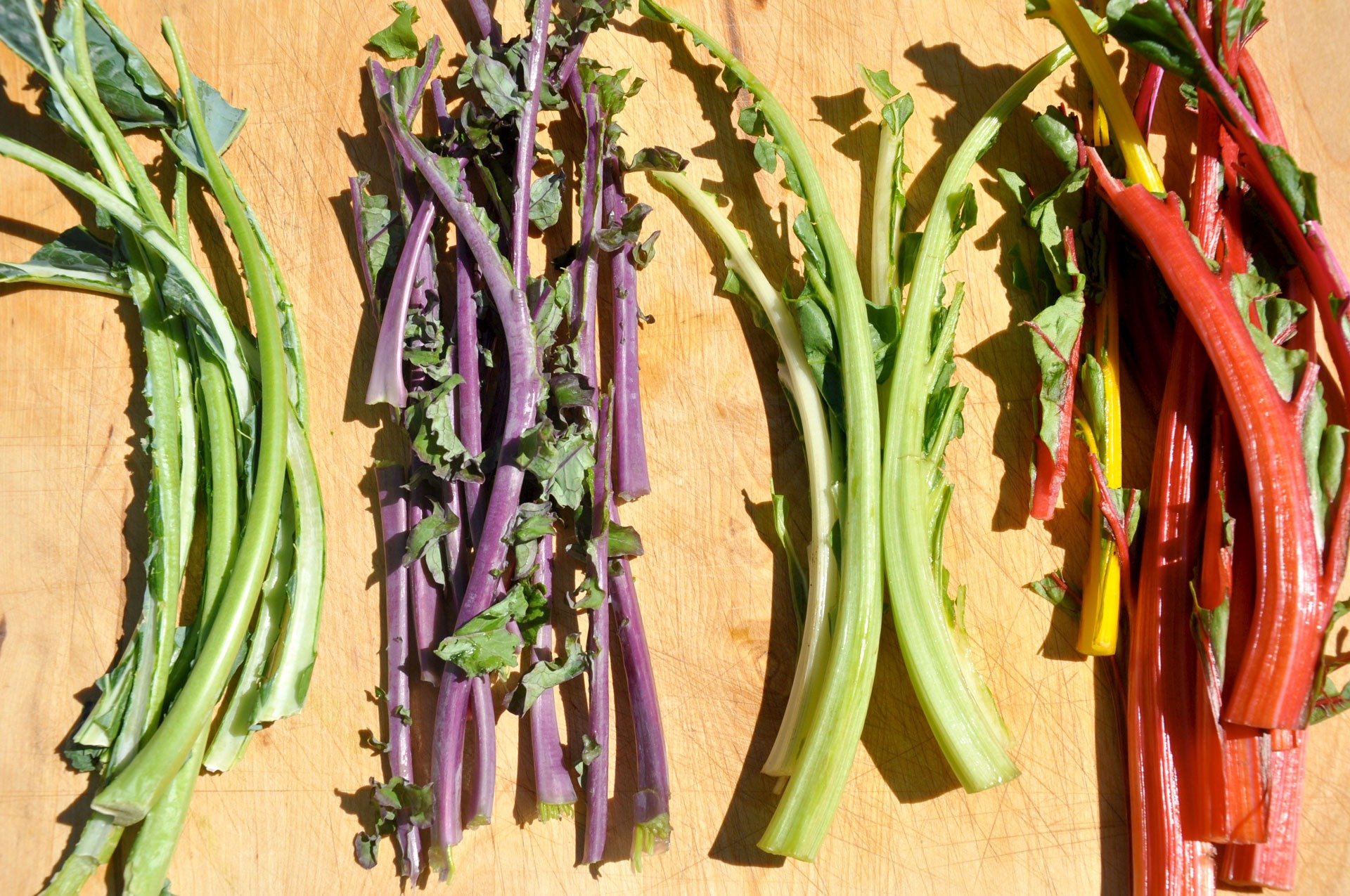Real Food Encyclopedia | Chard
We are all familiar with the leafy green known as spinach and its magical nutritional powers. But chard (Beta vulgaris), its cousin? Not so much.
Also known as leaf beet, silverbeet, white beet and spinach beet (you guessed it — beet is part of the family, too), chard is better known on the other side of the Atlantic than it is on American shores. Even with increasing appearances at farmers’ markets and in CSA shares and produce aisles, chard remains relatively unsung. At first glance, chard is a real looker, its leaves ruffled like a petticoat dress, accented with multi-colored veins that run through them like embroidery. Its stems come in a variety of shades that are the stuff of designer dreams — creamy white, blood red, groovy magenta and bright yellow.
The public relations problem may also be one of confusion: Maybe you’ve heard it referred to as “Swiss chard” or “rainbow chard” and didn’t know the difference — or is there one? Other than its more textured stems, chard cooks very much like spinach and can be used interchangeably in most cooked dishes.
Fun facts about chard:
- Despite the common “Swiss” reference, chard is not Swiss in origin. In fact, it is a native of the Mediterranean.
- It is believed that the name “chard” is derived from the French word for “cardoon,” which is carde, which furthers the confusion because a cardoon is a thistle and hardly a leafy green.
- It’s unclear just how old chard is, but several sources mention Aristotle giving a shout-out to red-stalked chard around 350 BCE and that both his Greek colleagues and Roman counterparts revered it for its medicinal prowess.
What to look for when buying chard
You want crisp, perky and glossy leaves — nothing wilted, dull or sad. Even if you don’t use the stems, they should be firm and look healthy.
Sustainability of chard
Unlike spinach, which is grown on an industrial scale and has been plagued by ongoing food safety scares in recent years, chard remains a decidedly non-commodity crop favored by small farms and avid gardeners. So far, it remains free of the trappings of industrial agriculture, which means local options are abundant, either through farmers’ markets, CSA shares or at natural foods markets.
(It should be noted that conventionally grown spinach is ranked number two on the “Dirty Dozen” list of products with high amounts of pesticides, compiled by the Environmental Working Group, but chard isn’t mentioned.)
Seasonality
Chard is a cool weather crop with a relatively high tolerance for cold and low tolerance for heat. Depending on where you live, you may see chard abundance in spring, early summer and then again in the fall, even after the first frost.
Eating Chard
Storing
Often sandy and in need a good rinse, resist the temptation and don’t wash chard until ready to use. Keep it dry in a kitchen towel and out of the plastic bag, as moisture makes for slimy leaves. Use within three days.
Cooking
There are two camps of chard eaters — those who relish the stems and those who don’t understand the hype. If you don’t want to waste the stems, cook them separately from the leaves, as they take longer to cook.
Whatever you decide, you’ll need to remove the stems that travel all the way to the top of the leaf. Using your hands or a paring knife, pull the leaf away from where it meets the stem on both sides, then rinse thoroughly.
If you’ve never had the pleasure, chard has a more complex flavor profile than spinach: It’s earthier (probably because of its beet lineage) and sweeter, and despite the presence of oxalates, it doesn’t create that filmy feeling on your teeth that is characteristic of spinach, unless eaten raw.
Chard is great paired with legumes (particularly lentils) or grains. It works great in pilafs, mixed into soups and stews, as part of a frittata or with pasta, from short penne to lasagna and ravioli. It can be steamed, roasted, stuffed, braised and gratinéed.
Nutrition
Antioxidants, phytonutrients, vitamins, iron, fiber, folate, protein, magnesium. What doesn’t chard have going for it? It even contains tryptophan, the amino acid known as a natural relaxant and sleep aid that most people associate with Thanksgiving turkey.
One cup of cooked chard has more than three grams of protein and half our daily needs for Vitamin C, for only 35 calories. Those rainbow-colored stems and veins are the source of amazing phytonutrients that are being studied for anti-inflammatory, detoxifying and disease-fighting benefits.
The caveat: Like spinach, chard has considerable amounts of oxalic acid, which can be minimized by cooking. Avoid if you are being treated for kidney or gall bladder conditions, and as always, check with your medical provider.
Top photo by grislana/Adobe Stock.


